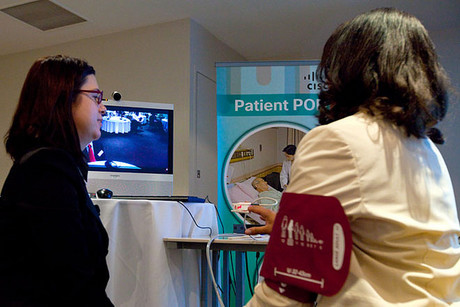Better broadband a must to improve rural health

The Australian Medical Association (AMA) is urging the government to improve the availability of affordable high-speed broadband services in regional, rural and remote areas, noting that this is a top priority in the effort to improve health outcomes in these areas.
In a new position statement, the AMA said roughly 30% of the population living outside of major metropolitan areas often struggles to access health services that urban Australians would consider a basic right.
Research from the association found that improving access to high-speed broadband for medical practices is considered a key priority for rural doctors, because this is an essential prerequisite for unlocking the benefits of e-health and telemedicine in remote areas.
In many country areas internet connections remain of a very poor quality, and mobile coverage is often patchy, unreliable or absent. Penetration and usage also lags behind in regional areas compared to the capital cities, the AMA noted.
While mobile broadband usage is higher in non-urban areas than urban areas, this technology is poorly suited for health applications due to the relative high costs and low data allocations available.
Likewise, while the nbn’s multitechnology mix rollout plan calls for the two Sky Muster satellites to be used to deliver broadband to the most remote 3% of the population, the AMA said satellite connectivity may be inadequate for the delivery of advanced telehealth services.
The potential economic benefits of improving healthcare outcomes with telehealth services are significant, the position paper states. In New Zealand, the benefits from broadband-enabled healthcare have been projected to reach around $6 billion over a 20-year period.
As well as telehealth, the healthcare sector needs telecoms connectivity for health service delivery and management, conducting business with government, professional development, online education, mentoring and clinical decision-making support.
“To effectively leverage telecommunications technology to deliver better health outcomes at lower cost in regional, rural and remote areas and to implement new models of health care, both mobile and broadband technology must be reliable, affordable and supply adequate capacity,” the position paper states.
Technological advancements also have the potential to transform the delivery of health care, the position paper states.
Potential applications and benefits include better diagnostics, 3D-printed customised medical technology products and VR environments to accelerate behaviour change in patients. But these advances can only be realised if affordable and sufficient access to broadband services is available.
“As mainstream healthcare provision becomes increasingly technology based and requires more and faster broadband services to operate, there is a real risk that regional, rural and remote areas of Australia will be left further and further behind in their ability to provide quality health services,” the paper states.
The AMA has taken the position that high-speed broadband should be available to the same standard and at the same cost to every Australian community and business.
To achieve this, the AMA has made a series of recommendations, including developing a new Consumer Communication Standard that all voice and data services will need to meet in terms of availability, accessibility, affordability, performance and reliability.
A new funding mechanism should be established to fund the deployment of loss-making broadband infrastructure in regional Australia. This would replace the current industry levy.
The AMA is also recommending that the government extend the boundaries of the NBN’s fixed-line and fixed wireless footprints to provide wider coverage and ensure universal unmetered online access to government, hospital and health services for people and businesses in rural and remote areas.
Ruckus launches AI-driven network solutions
CommScope subsidiary Ruckus Networks has unveiled a host of new AI-driven networking solutions,...
Infoblox launches Universal DDI suite
Infoblox's new Universal DDI Product Suite is designed to allow organisations to centralise...
Ruckus, Nokia launch campus network solution
Ruckus Networks and Nokia have jointly developed an integrated fibre and Wi-Fi networking...




